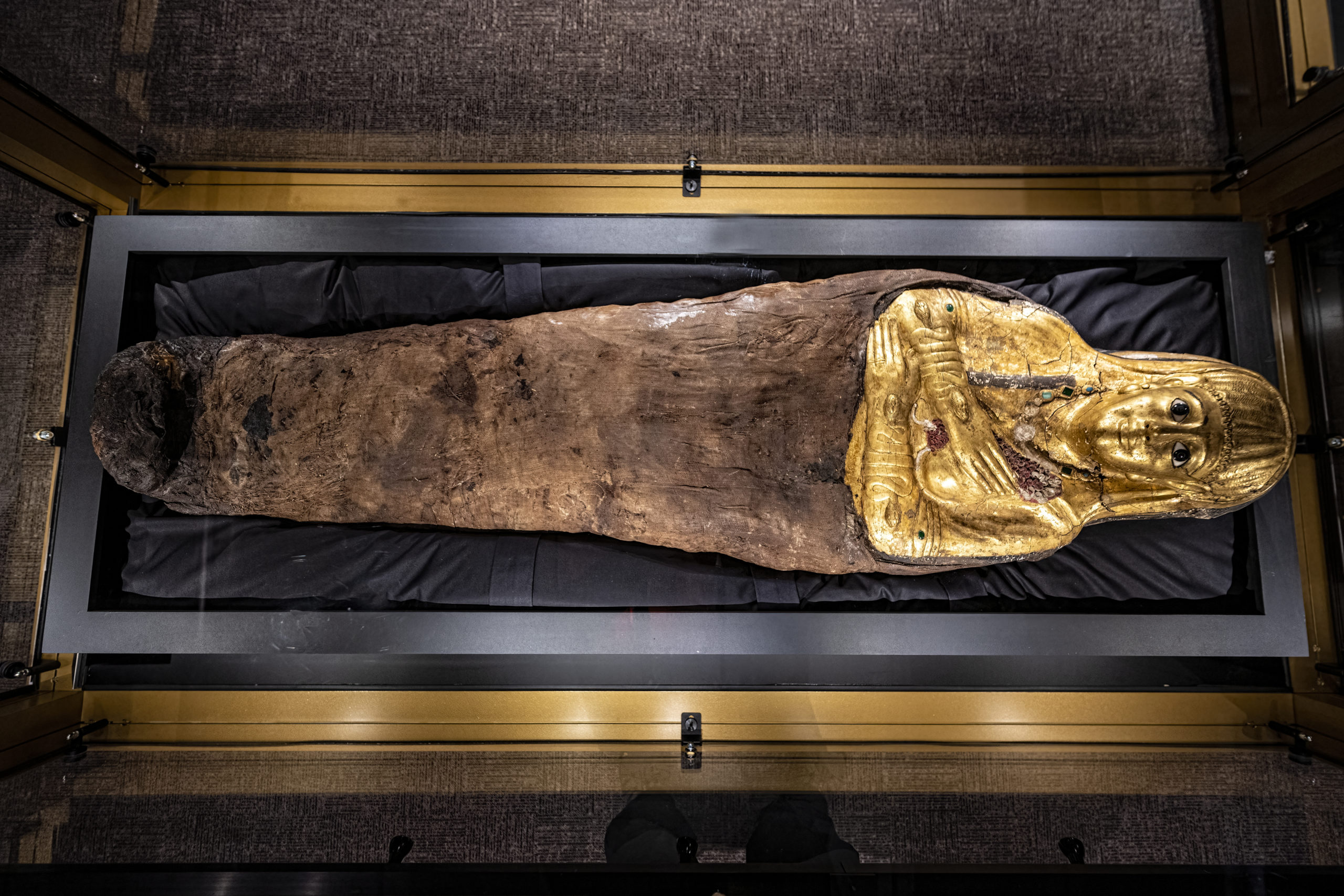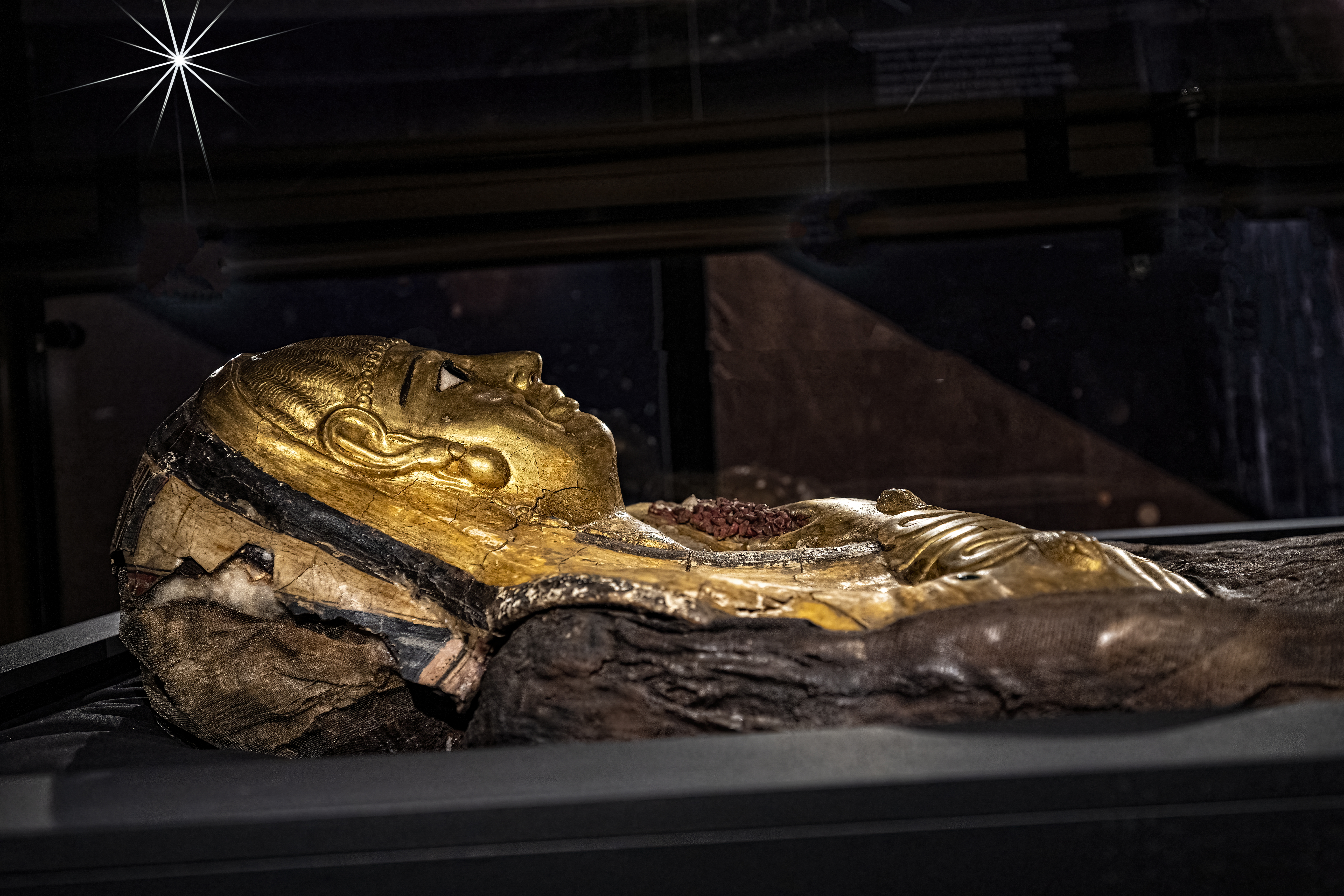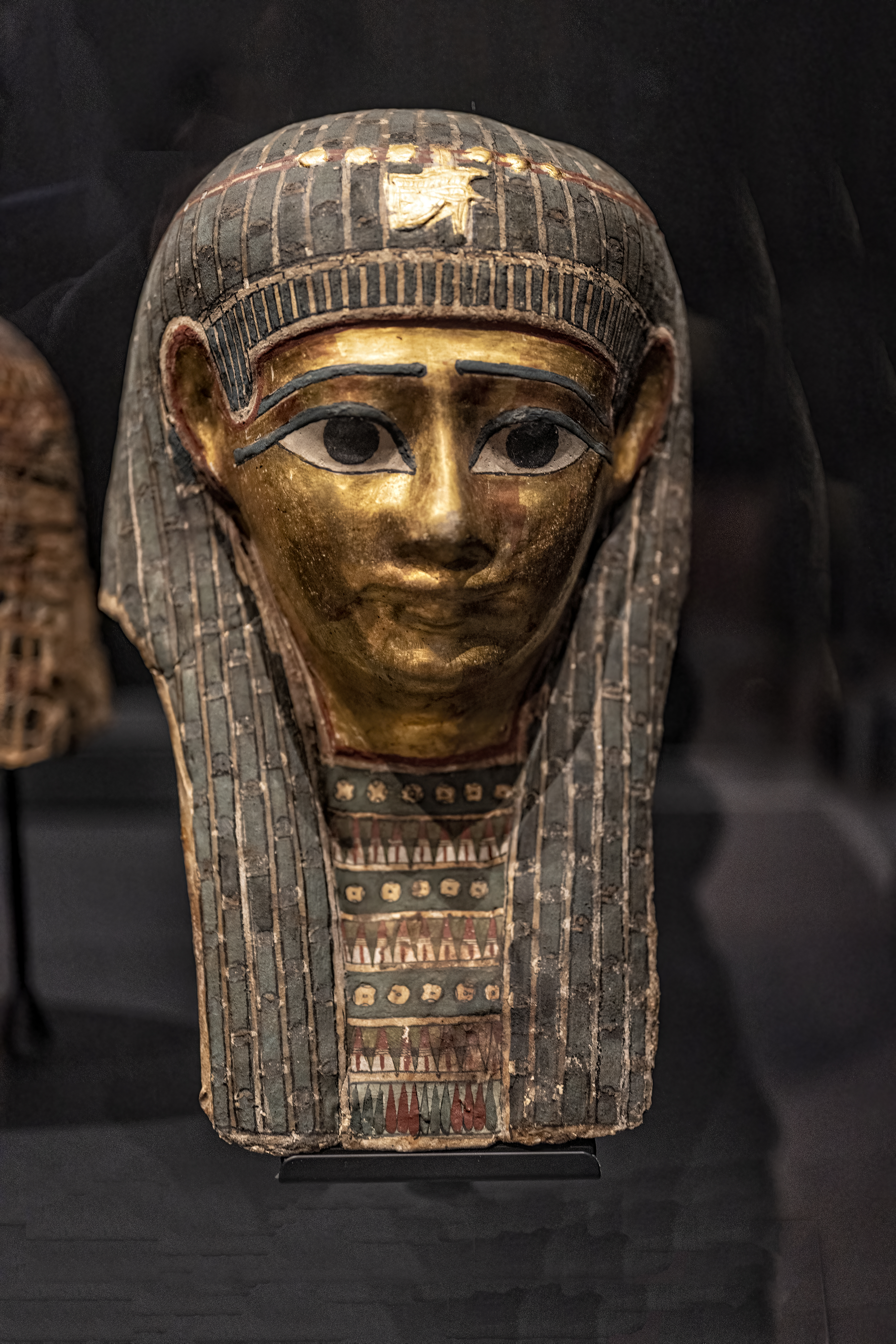TWH – Last month the Egyptian daily newspaper, Al-Ahram reported that excavators have found mummies with golden amulets where their tongues should be. Archaeologists made these finds at the Quweisna Necropolis, located north of Cairo in the Nile Delta.
Archaeologists discover golden tongued mummies in Egypt
The discovery was made during research at the Quweisna necropolis, which contains hundreds of tombs from different periods in Egypt’s history.https://t.co/OaznHoa5dT pic.twitter.com/urPqiS7Eb4
— 🅰ntiquity Journal (@AntiquityJ) December 2, 2022
Archaeologists have found mummies with golden tongues before. In early 2021, archaeologists discovered two mummies with golden tongue amulets in Taposiris Magna, near Alexandria. Founded in the 3rd Century B.C.E., Taposiris Magna, became a major center of the cult of Osiris. According to one theory, the function of the amulet could be to enable the deceased to speak with Osiris. In the Egyptian pantheon, Osiris is linked to death and the Otherworld.
In late 2021, archaeologists found three other mummies with golden tongue amulets. The mummies were those of a man, a woman, and a young child. They had died roughly 2,500 years ago. Archaeologists made this find at Oxyrhynchus, about 100 miles southwest of Cairo.
The golden tongue amulets were made as part of the mummification process. First, the priests would have removed the tongue from the deceased. Then, they would use gold foil, shaped into the form of a tongue, to make the amulet. After the appropriate ritual activity, they would then insert the amulet into the mouth cavity.
Mustafa Waziri, Secretary-General of the Supreme Council of Antiquities, discussed other finds at the site. He said, “The team also found clay pots, golden artefacts in the shape of scarabs and flowers, as well as a number of funerary stone amulets and vessels.”
The architecture of the Quweisna Necropolis
The area of the Quweisna Necropolis with the golden tongue amulets had a distinct architectural style. Head of the ancient Egyptian Antiquities Sector, Ayman Ashmawi linked this distinct style to the time of their construction. Archaeologists have dated the golden-tongued amulets to three distinct periods. Some dated from the late Egyptian (roughly 664 to 332 B.C.E.). Others date from the Ptolemaic or Hellenistic (332 to 30 B.C.E.). Still, others date from the Roman and Byzantine (30 B.C.E. to 641 C.E.) periods.
In the Quweisna Necropolis, the recently excavated areas had mudbrick construction. Its vaulted main hall had three vaulted burial chambers, as well as a burial shaft. In the shaft, excavators found two more mudbrick burial chambers.
The twilight of Egyptian cultic practices
To date, no one has found mummies with golden-tongued amulets from the Old, Middle, or New Kingdoms. This may reflect more successful tomb robbers from those periods, who could have stolen all earlier golden tongue amulets.
Other finds at the Quweisna Necropolis besides the golden tongue amulets.
Previous excavations have been reported as finding “a collection of tombs, remains of buildings, mummies, coffins, and sarcophagi, including a huge anthropoid sarcophagus carved in black granite for one of the senior priests.” Excavators also found tools and supplies related to the mummification process.
The mummies discovered at the Quweisna necropolis showed a poor state of preservation. Besides the golden tongue amulets, several mummies had coverings of sheets of gold before they had been placed in wooden coffins.
How the ancient Egyptians understood gold.
Newsweek reported that ancient Egyptians considered gold to be the “skin of the gods.” Given its sheen and brightness, gold became associated with the sun god, Ra.
Xinhua reported that an archaeological expert, Bahaa Al-Nagar described ancient Egyptian beliefs about gold as an everlasting material. As such, its brightness would be eternal. Elite Egyptians used gold to decorate their fingers, masks, toes, and tongues. Al-Naga theorized that “the tongues were made of gold to ensure the deceased would be able to speak in the afterlife.”
The cult of Osiris
The Egyptian creation myth identifies Osiris as the firstborn of four gods from the union between the sky goddess, Nut, and the earth god, Geb. Their children also included Isis, Nephthys, and Set. As firstborn, Osiris became the ruler of Egypt and was married to Isis while Set was married to Nephthys. Their interlocked stories became central to Egyptian cultic practices.
Jealous and resentful of Osiris, Set killed and ultimately dismembered Osiris. Isis went searching for Osiris. She found almost all his body parts. Then, she reassembled those body parts and resurrected Osiris, and created a child, Horus. Since Osiris was incomplete and could not continue to be the ruler of Egypt, he descended to the Underworld where he became lord of that domain.
The full Egyptian mythic cycle is considerably more complex and there are a number of variations in different versions of the stories.
Ancient gods sometimes embody contradictory elements. Osiris was linked to death, rebirth, destruction, creation, the grinding of grain into flour, and the annual Nile flooding. He ruled over the court of the underworld. That court would judge the fate of every deceased soul that came before him.
Osiris had many epithets. One of his epithets was “the lord of silence.” That epithet would lend importance to an amulet that would grant the deceased the ability to speak before Osiris.
Could mummification have been a step toward deification?
Organizers of an upcoming museum exhibition are challenging a common theory the function of mummification was to preserve the body after death. Instead, the new theory argues that mummification functioned as part of the process of deification.
The exhibit “Golden Mummies of Egypt,” will be on display at the Manchester Museum in England and will feature over 100 objects and eight mummies. The exhibit is scheduled to open in February of 2023.
Egyptologist Dr. Campbell Price curates the Manchester Museum’s Egyptian and Sudanese section. In an interview, Price said, “The idea that we inherited from the Victorians, that it was all done to keep a dead body just as it was in life, is not right. It is flawed, and we now believe it was intended to steer them towards divinity.”
He also emphasized the bias of Victorian archeologists, and their focus was driven by the values of that era concerning race, gender, status, and death.
“It didn’t help that there was a biomedical obsession that was born from Victorian ideas about needing your body complete in the afterlife,” Price said. “This included removing the internal organs. I think that actually has a somewhat deeper meaning…and is basically about turning the body into a divine statue because the dead person has been transformed.”
Price argued that Victorian researchers thought of mummification as similar to salting fish to keep it fresh. Both techniques relied on salt for preservation but Price points out that each process used a different type of salt. Unlike salted fish, mummification uses natron, which is naturally occurring in the lake beds around the Nile.
Natron also had other uses. The Egyptians used natron to clean temples and statues of the gods. Egyptians also believed incense, like frankincense and myrrh, to be gifts to the gods.
Price points out, “Even the word for incense in ancient Egyptian was ‘senetjer‘ and literally means ‘to make divine.’ When you’re burning incense in a temple, that’s appropriate because that’s the house of a god and makes the space divine. But then when you’re using incense resins on the body, you’re making the body divine and into a godly being. You’re not necessarily preserving it.”
This new interpretation has not yet achieved consensus among Egyptologists. It is unclear how, or even if, such interpretations could be proven. Neither, however, can the currently dominant theory be proven. Such as mystery is not foreign to myth but certainly part of our attraction.
The museum has published an eponymous book with the exhibit, Golden Mummies of Egypt, written by Price and featuring photographs by Julia Thorne.
The Wild Hunt is not responsible for links to external content.
To join a conversation on this post:
Visit our The Wild Hunt subreddit! Point your favorite browser to https://www.reddit.com/r/The_Wild_Hunt_News/, then click “JOIN”. Make sure to click the bell, too, to be notified of new articles posted to our subreddit.


